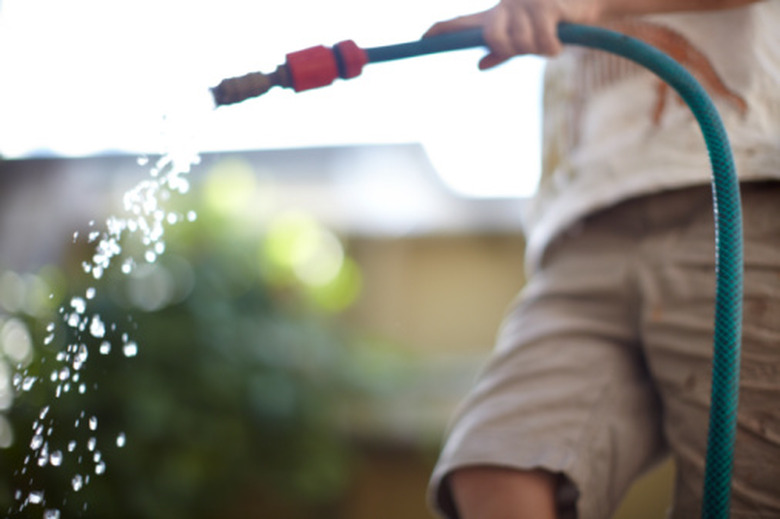Signs Of Over Watering St. Augustine Grass
St. Augustine is a warm-weather, wide-bladed grass commonly grown in the southeastern part of the country. St. Augustine grass grows rapidly in the heat and slows down in the winter, when less watering is required. A lack of water can damage this grass, but too much water can also produce problems because it is has shallow roots and is susceptible to fungal attacks.
Curled Leaves
If the leaves on St. Augustine grass begin to show a slight curling, it is a sign they probably have received too much water. Refrain from watering until the leaves straighten out.
Depressions
When you walk on St. Augustine grass and the leaves do not spring back, it is often a sign of over watering. When this is the case, a matted depression will be left by your footprints.
- St. Augustine is a warm-weather, wide-bladed grass commonly grown in the southeastern part of the country.
- If the leaves on St. Augustine grass begin to show a slight curling, it is a sign they probably have received too much water.
Color Change
St. Augustine grass that has been over watered can often change color. Instead of a deep green color, the blades will have a more blue or grayish color.
Dying Grass
St. Augustine grass that has received too much water is vulnerable to being attacked by a fungus known as brown patch. When a St. Augustine lawn begins to die, brown circles will appear. These circles spread and usually multiple patches occur.
Care Of St. Augustine Grass
St. Augustine grass (Stenotaphrum secundatum) is a tropical grass that is the most popular turf from Florida to central Texas. It naturally forms a dense turf and also has a good salt tolerance. If you're looking for a dense turf that thrives in a warm, coastal climate, you can't do better than St. Augustine grass. The turf is an attractive green and grows well in most types of soil. Normally a solid green, the grass turns a bluish hue when it needs water. When you do irrigate, do it in the morning and water deeply, to a depth of 3 or 4 inches, to encourage deeper roots. Alternatively, walk across your lawn, watching your footprints. Keep your grass thick and healthy by mowing with a sharp blade. If you mow grass shorter than this, you'll stress the grass and leaf blades, which will make the blades look less green. Dull lawn mower blades make rough cuts, causing the grass to look brown. Primary diseases of St. Augustine turf include brown patch, take-all root rot and gray leaf spot. These occur in hot, wet weather. Excess nitrogen and irrigation can encourage these diseases, so keep to the program. You can also scatter organic matter on the grass. If your lawn has been long neglected, you may be more interested in repairing your St. Augustine grass than maintaining it. What exactly should you do? First, make a "keep off the grass" rule for the indefinite future.
- St. Augustine grass that has been over watered can often change color.
- Excess nitrogen and irrigation can encourage these diseases, so keep to the program.
- What exactly should you do?
References
- Texas Cooperative Extension: St. Augustine Grass
- mastergardenproducts.com: Watering Your Lawn
- Lawn Care Academy: St.Augustine Grass
- All About Lawns: Planting St. Augustine Grass
- Aggie Horticulture: St. Augustine Grass
- Clemson.edu: St. Augustine Grass
- Saint Augustine Lawn Care: Repair a Damaged St. Augustine Lawn
